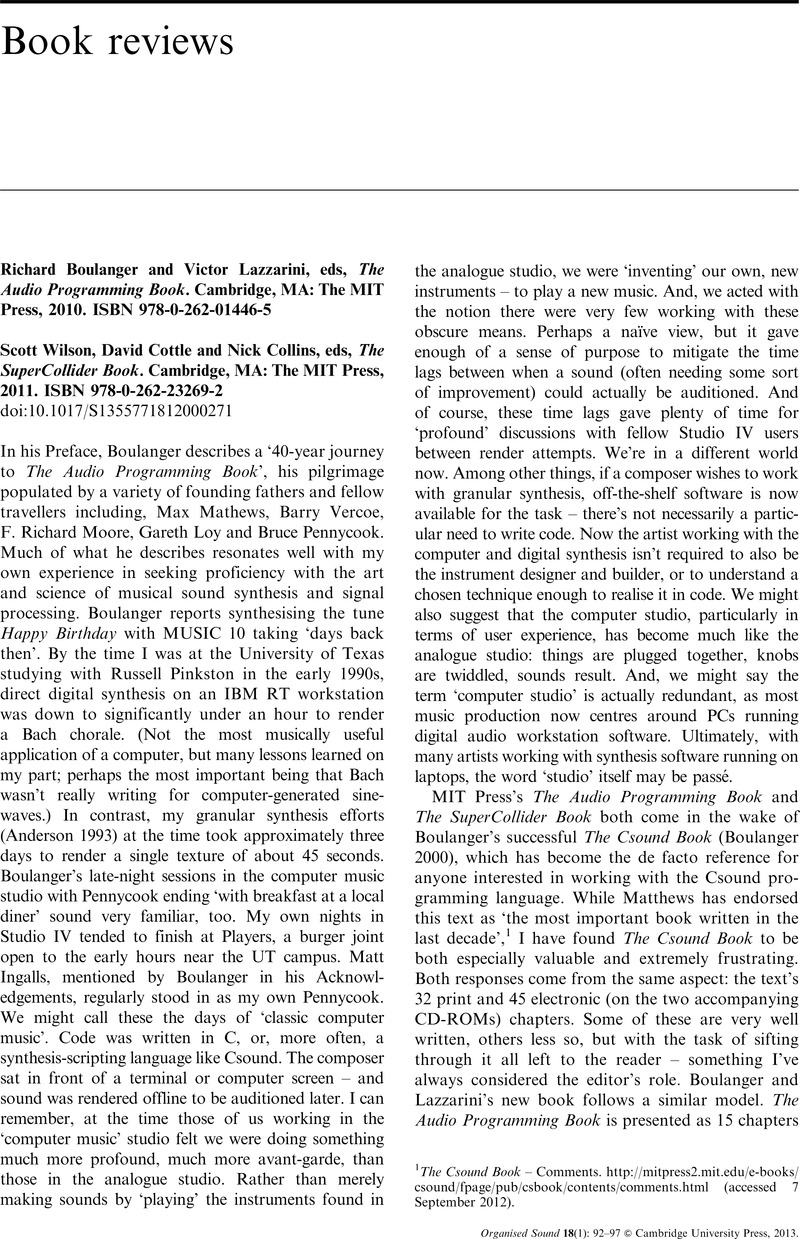

UGen.browse // examine methods interactively in a GUI (OSX)

UGen.dumpSubclassList // UGen is a class. For checking the implementations of a method (which classes support it), type Apple + Y - pollįor checking references to a method (which classes support it), type Shift + Apple + Y - poll.For checking the sourcefile, type Apple + i (or cmd + i) when a class is highlighted (say SinOsc).If you add a new class to SuperCollider, you need to recompile the language (there is a menu item for that), or simply start again. (As opposed to a "compiled" language like C or Java). These files are compiled every time SuperCollider is started and become the application environment we are using. But first let us learn some tricks of peeking under the hood of the SuperCollider language: Peaking under the hoodĮach UGen or Class in SuperCollider has a class definition in a class file. Now is the time to dive into making sounds and explore the synthesis capabilities of SuperCollider. Below is a Twitter composition by Tim Walters, but as you can see, it is not good for human readability although it sounds good (The language doesn’t care about human readability, but we do): play) There is however a style of SC coding used for Tweeting, where the 140 character limit introduces interesting constraints for composers. It is up to you how you format your code, but you'd typically want to keep it readable for yourself in the future and other readers too. However, this will work: "Hello World".postln "Goodbye World".postln Why not? Because the interpreter (the SC language) will not understand "Hello World".postln"Goodbye World".postln
#Supercollider book code
This code will work fine if you evaluate only this line: "Hello World".postlnīut not this, if you evaluate both lines (by highlighting both and evaluating them with Shift+Return): "Hello World".postln Forgetting it will give you errors printed in the post console. There has to be semicolon after each line of code. After the semicolon, the interpreter looks at next line. The semicolon " " is what divides one instruction from the next. The semicolon, brackets and running a program Having grasped the topics introduced in this chapter, you should be able to write practically anything that you want, although later we will go into Object Orientated Programming, which will make things considerably more effective and perhaps easy. We will also discuss the key fundamental things needed to understand and write SuperCollider code, namely: variables, arrays, functions and basic data flow syntax. The essential reference to SuperCollider, a powerful, flexible, open-source, cross-platform audio programming language.SuperCollider is one of the most important domain-specific audio programming languages, with potential applications that include real-time interaction, installations, electroacoustic pieces, generative music, and audiovisuals.
#Supercollider book how to
We will learn the basic key orientation practices of SuperCollider, that is how to run code, post into the post window and use the documentation system. It will introduce the basic concepts needed for further exploration and it will be the only silent chapter in the book. This chapter will introduce the fundamentals for creating and running a simple SuperCollider program.


 0 kommentar(er)
0 kommentar(er)
